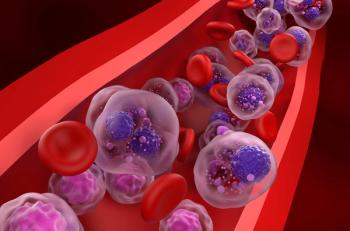
Game Theory Provides Insight on Cancer Research
Mathematicians at Cornell University are using game theory to model how cancer treatment may be administered more sparingly with maximized effect.
Mathematicians at Cornell University are using game theory to model how cancer treatment may be administered more sparingly with maximized effect.
Senior author of the study and professor of mathematics at Cornell, Alexander Vladimirsky, PhD, said that there are many game theoretic approaches for modeling human behavior and biological systems.
“You could also model interactions between different types of cancer cells, which are competing to proliferate inside the tumor. If you know exactly how they're competing, you can try to leverage this to fight cancer better,” Vladimirsky said in a press release.
The researchers used evolutionary game theory to model the interactions of 3 subpopulations of lung cancer cells that are differentiated by their relationship to oxygen: glycoltyic cells (GLY), vascular overproducers (VOP), and defectors (DEF).
In this model, GLY cells are anaerobic, meaning that they do not require oxygen. VOP and DEF cells both use oxygen, but only VOP cells are willing to expend extra energy to produce a protein that will improve the vasculature and bring more oxygen to the cells.
Vladimirsky likens their competition to a game of rock, paper, scissors, in which 1 million people are vying against each other. If the majority of participants choose to play rock, a greater number of players will be tempted to switch to paper. As the number of people switching to paper increases, fewer people will play rock and many more will shift to playing scissors. As the popularity of scissors grows, rock will become an attractive option again, and so on.
"So, you have 3 populations, 3 competitive strategies, undergoing these cyclic oscillations. Without a drug therapy, the 3 subtypes of cancer cells may follow similar oscillating trajectories. Administering drugs can be viewed as temporarily changing the rules of the game,” Vladimirsky said.
"A natural question is how and when to change the rules to achieve our goals at a minimal cost—both in terms of the time to recovery and the total amount of drugs administered to the patient. Our main contribution is in computing how to optimally time these periods of drug treatment adaptively. We basically developed a map that shows when to administer drugs based on the current ratio of different subtypes of cancer.”
In current clinical practice, patients with cancer typically receive chemotherapy at the highest dose their body can safely tolerate, and the adverse events can be dangerous. In addition, a continuous treatment regimen often causes surviving cancer cells to develop drug resistance, making further therapy far more difficult. The team's paper shows that a well-timed "adaptive" application could potentially lead to a patient's recovery with a greatly reduced amount of drugs.
Vladimirsky notes that as is often the case in mathematical modeling, reality is not as predicative as theory. Biological interactions are complicated, often random, and can vary from patient to patient.
"Our optimization approach and computational experiments were all based on a particular simplified model of cancer evolution. In principle, the same ideas should also be applicable to much more detailed, and even patient-specific, models, but we are still a long way from there. We view this paper as a necessary early step on the road to practical use of adaptive, personalized drug-therapy. Our results are a strong argument for incorporating timing optimization into the protocol of future clinical trials,” Vladimirksy said.
Reference
- Game theory suggests more efficient cancer therapy [press release]. Cornell University website. Published April 23, 2020. https://news.cornell.edu/stories/2020/04/game-theory-suggests-more-efficient-cancer-therapy. Accessed April 30, 2020.
Newsletter
Stay informed on drug updates, treatment guidelines, and pharmacy practice trends—subscribe to Pharmacy Times for weekly clinical insights.






































































































































































































